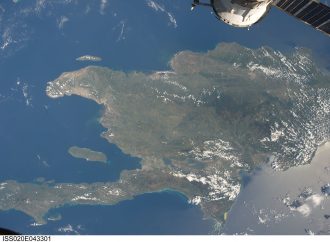Critics have pounced on Defence Minister Harjit Sajjan’s multi-country African odyssey in search of an appropriate peacekeeping mission for the Canadian Forces. The critics have a point. Even with distinguished Canadians on board, this is a silly way to run foreign policy: a blatant appeal to the Liberal party’s base and a nostalgic longing for
Critics have pounced on Defence Minister Harjit Sajjan’s multi-country African odyssey in search of an appropriate peacekeeping mission for the Canadian Forces. The critics have a point. Even with distinguished Canadians on board, this is a silly way to run foreign policy: a blatant appeal to the Liberal party’s base and a nostalgic longing for a largely mythical past. Although it’s also part of a long-term strategy to get Canada back to the UN Security Council (SC) in a few years’ time, our friends won’t be impressed with this mission, and many will question our seriousness of purpose.
Most of the answers from the Sajjan mission should already be known to Global Affairs Canada (GAC) and the rest of the government. GAC and Canada’s Permanent Mission to the UN in New York are the true focal points for Canadian knowledge about UN peacekeeping operations, and GAC should be able to speak to the origins of these operations, their prospects for advancing peace and stability, and the likely matches between Canadian capabilities and what the UN wants and needs. Most of this essential foundation work for eventual policy decisions should already have been done.
The answers to many of the government’s obvious questions should be sobering. The costs of a meaningful military mission will be high, and the impact is likely to be minimal. What the UN typically needs in peacekeeping operations (like helicopters) is expensive. What the UN doesn’t need are more foot-soldiers, which are readily available from the current major troop-contributing countries.
What UN officials really want is long-term commitment, particularly in the management and leadership of peace operations. This is precisely what the Canadian Forces want to avoid since some of these situations are quagmires with no end in sight and no peace to keep. None of them will give the quick-hit, positive-publicity fillip the government wants on the peacekeeping file. And the risks of failure and Canadian casualties are high.
The central problem with the defence minister’s mission is that the real challenges for UN peace operations are not on the military side, which is a symbol of the problem, not part of the solution. The challenges are on the civilian side, as identified in a recent UN report. Civilians provide everything from the leadership cadre and peace mediators to humanitarian aid workers and medical care-givers.
For each new peace operation, the UN must cobble the civilian components together from dozens of UN agencies, NGOs, national organizations, and international groups. Because they can’t be recruited in formed units like the military, missions are buffeted frequently by deficiencies in staffing. This is precisely the area where the Canadian government could make a real contribution to international security, at much less cost than a military contribution and with little of the associated risk. Simply using CANADEM to renew the innovative and inexpensive initiative of more than 15 years ago to increase the number of Canadian civilians staffing UN field operations would be a credible start.
More fundamentally, Canada should only deploy in a major peacekeeping capacity where it knows the terrain and has assets to deploy in addition to the military. In most places Minister Sajjan is visiting, Canada has a minimal diplomatic presence and almost no development programs, and thus limited intelligence on the nature of the conflicts. Tragic as these situations might be, we should know better than to make a major commitment without the knowledge, leverage, or influence on the situations that have made peace operations necessary. We have no value to add in these areas. If we want renewed engagement, then we should commit resources to a full spectrum of involvement, including increasing our minimalist diplomatic presence in Africa and enhancing our development assistance programs. Peacekeeping alone isn’t the answer, as Minister Sajjan, to his credit, already knows.
In principle, it makes sense for Canada to take on an increased security role abroad, especially in uncertain times when our allies are challenged in other parts of the world. But it’s only prudent to do so in places where we know what we’re facing and we have a meaningful national interest for engagement.
For years the US and the UK have asked Canada to assume a bigger role in Central America and the Caribbean, and countries in that region have invited such involvement. This would be a sensible move, and we have a full array of security assistance instruments to deploy, from police training to judicial assistance, at a time when this region needs help. Such a commitment won’t increase Canadian numbers on the UN’s peacekeeping charts, but there are nevertheless useful roles for the Canadian military in this part of the world, which has strategic importance to Canada.
Peacekeeping is only one instrument of foreign policy, and it’s an expensive option. Before leaping into a problematic or non-productive commitment, the government may wish to review its criteria for engagement. Here are four suggested points:
- We choose our commitments as part of a serious, long-term engagement to a part of the world where Canada can focus its energies and resources to best effect.
- We ensure a base of intelligence analysts, policy practitioners, and program specialists, backed up by a strong diplomatic network, to understand the region and contribute to its long-term stability and security.
- We look to multi-faceted Canadian engagement, using an array of measures and programs essential to sustaining security and stability, with an important emphasis on civilian deployments.
- We develop a process of engagement with the Canadian academic, NGO, and think-tank community, as well as with diaspora groups in Canada, to help maintain strong Canadian support for a long-term commitment.
The debate on peacekeeping is useful. At a time of limited resources, however, it would be prudent to keep expectations low until we can develop a reasonable plan at a reasonable cost, with legitimate prospects of progress and long-term impact. This will sustain Canadian support for peace operations over the long term.









